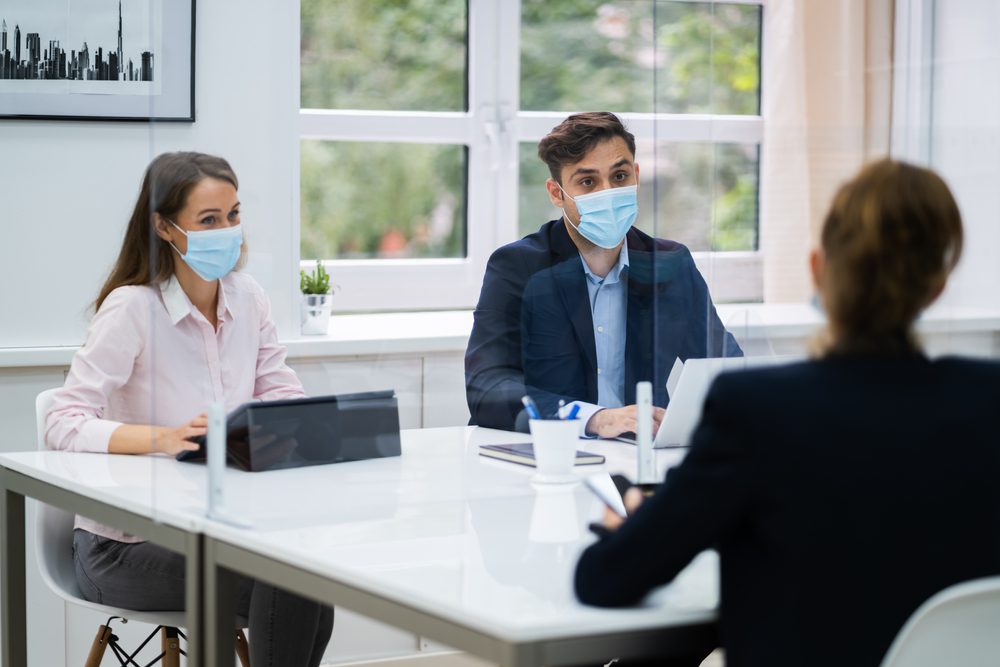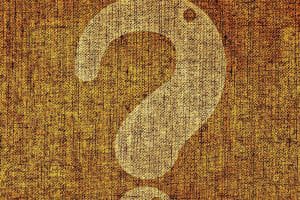Rare Community Profiles

Rare Community Profiles is a new Patient Worthy article series of long-form interviews featuring various stakeholders in the rare disease community, such as patients, their families, advocates, scientists, and more.
The Importance of Advocacy: How Gaucher Disease Diagnoses Changed the Garay Family’s Trajectory
More than a year. That’s how long Ana and Eric Garay waited to learn what was going on with their daughter Annika.
Annika was extremely fatigued. Sometimes, she fell fast asleep on the kitchen tile or stairs. Then, one morning, Ana noticed that Annika woke up in a completely dry diaper.
This was concerning, to say the least; it had been at least three days since Annika’s last bowel movement, and the fact that she wasn’t urinating either concerned her parents. They made a doctor’s appointment for that afternoon. By the time they reached the doctor, it had been hours since Annika had urinated.
An abdominal exam found Annika’s abdomen to be distended. The Garay family went to the emergency room for additional testing, which showed that Annika was slightly anemic.
After a two-night hospital stay, the family was referred to a GI doctor and pediatric hematologist. More testing found that Annika had an enlarged liver and spleen. Her rapidly falling red blood cell and platelet counts didn’t seem to coincide with her enlarged organs. The doctors were perplexed. It wasn’t leukemia, they said, but nothing seemed to make sense.
Monthly blood draws. Annika’s fear of the doctor. A spleen and liver that wouldn’t stop growing. Every test inconclusive. More than a year.
Finally, the family pursued their “last resort”: a bone marrow biopsy in January 2016—and just one month later, the family learned that Gaucher cells had been found. Soon after, doctors verified the diagnosis: Annika had Gaucher disease type 1.
Since Annika’s diagnosis, Ana and Eric had their other children—Diego and Sienna—tested. It was a shock to discover that Diego also had Gaucher disease type 1.
Ana and Eric sat down with Patient Worthy to share their story, raise Gaucher disease awareness, and empower others to advocate for themselves and their families.
What is Gaucher Disease?
Gaucher disease is a lysosomal storage disorder characterized by low or non-existent beta-glucocerebrosidase, a type of enzyme which breaks down a lipid (fat) called glucocerebroside. When there isn’t enough of the enzyme to break down glucocerebroside, the lipid builds up in cells. This accumulation can cause tissue and organ damage. GBA gene mutations cause Gaucher disease. This disease is more common in those of Ashkenazi Jewish descent. Eric shares:
“We’re part of the under 20% of non-Jewish individuals who have Gaucher disease. It’s even more rare to have more than one child with it!”
There are multiple types of Gaucher disease; Annika and Diego have type I. Type I is the most common form and, unlike other forms, does not involve the brain or spinal cord. Symptoms of Gaucher disease type I can include:
- An enlarged liver and/or spleen
- Easy bruising
- Thrombocytopenia (low platelet count)
- Anemia (low red blood cell count)
- Arthritis
- Bone pain and/or fracturing
- Frequent nosebleeds
Both Annika and Diego have a port and received infusions at the hospital for over a year. Insurance issues made them switch doctors so sometimes they spent the entire day traveling to and at the hospital for infusion days, which Ana and Eric say was disruptive. After a year, their doctor left and the new specialist was not familiar with Gaucher disease. Ana says:
“We’d go for infusions and wouldn’t see or hear from her. So we’d ask the nurses if they’d come to talk to us because our doctor just left her in the dark. We never knew if the treatment was working or what was going on. So when we learned about home infusions, it seemed like the right fit.”
Treatment options include infusions of enzyme replacement therapies (ERTs) like Cerezyme, VPRIV, and Elelyso, and oral medications like Zavesca and Cerdelga.
Coming to Terms with the Gaucher Disease Diagnosis
When Annika was diagnosed, the Garay family felt thankful that the geneticist had significant experience with Gaucher disease. But it was also difficult learning about the disease. As Eric shares:
“They said that it was treatable, but not curable. I asked how long Annika would need infusions for. The hematologist said it would be for life. That was pretty hard to hear, especially not knowing anything about the disease.”
The parents dove into research and discovered the National Gaucher Foundation. At the time, there were not many sources available on Gaucher disease online, so Ana called the Foundation to learn where to start. She spoke with Amy Blum, the Executive Director at the time, and shared the family’s story. Ana explains:
“We were told that Gaucher disease was genetic and both Eric and I were carriers. So, we should be careful if we wanted more children. But we already had more kids! We figured the odds were in our favor since neither Diego nor Sienna showed symptoms.”
Ana and Eric had Sienna and Diego’s blood drawn for testing—but didn’t tell them what was going on. Not yet. Not until they had answers.
Just one month after Annika’s diagnosis, the results came back. Diego had Gaucher disease type 1. Ana was at home alone at the time; she called her parents, Eric, and Eric’s mom to come over and discuss the news. She says:
“We finally felt like we knew what was happening. We were in a good place with understanding Gaucher disease, treatment options, and how we could take this on. Then we got hit with Diego’s diagnosis and kind of regressed. There were only 12 other people in New Mexico with Gaucher disease, so we were scared. My heart sank when I thought how we would tell Diego. He was nine and had seen everything that had happened with his sister, and now we had to tell him that he had it too.”
Unlike his sister, Diego was relatively asymptomatic. Looking back, his parents realized that he did easily bruise, but they just assumed that was due to the rough-and-tumble nature of childhood. Even when he had a bruise across his back from his truck that he drove, the family simply wrapped bubble wrap around the seat.
That day, Diego came home from school and was met with a serious conversation with his parents. They told him that it was treatable and manageable. That it would change their lives, but they would get through it together.
But there was a positive element of this diagnosis. Ana shares:
“We found out that Diego was on the verge of a bone crisis. He could have woken up unable to walk. So having a younger sister with this was a blessing because, without her symptoms, we never would have known or been able to help him.”
Advocacy Work
Around the time of the diagnoses, Eric and Ana had joined some online support groups, where they learned about the importance of finding a specialist. Amy Blum and the National Gaucher Foundation suggested visiting a doctor at Yale who focused on Gaucher disease. They helped the family get in front of the right doctor.
Says Ana:
“Amy was a pivotal force in our journey. She provided us with information and resources and got us in contact with patients, care teams, and doctors. We are so grateful for her and what she has given to our family.”
The Garays traveled to Connecticut and decided to give back to those helping their children by holding a toy drive to donate to Make-A-Wish (since both children qualified) and collecting donations for the National Gaucher Foundation. Says Eric:
“We wanted to get really involved in supporting the organizations and people that helped us in what felt like our darkest moments.”
The family also kickstarted their advocacy initiatives in New Mexico. Eric used to play in a band and was friends with a club promoter, so the Garay family held a fundraising concert; they got to go on their local network affiliate to discuss Gaucher disease and the concert, were featured on the front page of the newspaper, and even did a few radio interviews. Ana shares:
“The community was so uplifting and rallied around us. A restaurant did a fundraiser for us. We could have never expected the level of support we received even from strangers. It was overwhelming but in such a wonderful way.”
Outside of fundraising, Ana and Eric wanted to translate their advocacy work into actionable community benefit for their family and other families with Gaucher disease. Ana explains:
“We didn’t want other families to go through what we’ve gone through: that uncertainty, watching your child get sicker and doctors not able to explain what’s going on. So we wanted to advocate not just for Gaucher disease, but for our kids. We wanted to instill these behaviors of self-empowerment in them and let them know that Gaucher disease doesn’t define them. It isn’t going to change who they’re going to be. You just need to make the best of it.”
Eric adds:
“We want to set an example—for our kids and other families—to advocate for themselves. A lack of communication from doctors, insurance battles, treatment issues…these can all be overwhelming. They need to step up and fight for themselves.”
Eric and Ana drive this message home in every trip they take, from their Make-A-Wish trips to the Dominican Republic and Disney World, to Diego being Master of Ceremony at a Make-a-Wish Gala in front of hundreds of people, to a trip to Atlanta where all the children danced on stage.
Additional Advocacy Involvement
Outside of empowering their children and other families to advocate for themselves, Ana and Eric take on every advocacy opportunity that comes their way. They have continued their involvement with the National Gaucher Foundation, even visiting a conference in Manhattan. Eric says:
“That was big for us since it was the first time Diego and Annika met other kids with Gaucher disease and could talk about their experiences. It was also cool for Sienna to see the other siblings and family members and learn how she could support her brother and sister. Sienna comes with us to everything and has been very included in this process. There was a lot of attention on the other two, and she’s the middle child, but we wanted to make sure she was along for the ride.”
Since then, Ana and Eric have also spoken at several conferences, attended different conferences, and gotten involved in the Gaucher Community Alliance (GCA). Eric shares:
“GCA is a great resource and it’s patient-led. They offer informational webinars every month or so. We had Diego and Annika attend one for teenagers. Talking about treatment was really exciting for them! For people starting their journey, you may not want to do this now, but save this because you’re going to want this support group later. These people will be there and advocate for you.”
Finally, the Garay family has advocated for the inclusion of Gaucher disease on the newborn screening panel. New Mexico is the 5th state in the United States that requires this inclusion. However, widespread adoption of this could help save children and improve outcomes.
The Family Today
Currently, the family lives in New Mexico. Diego is 16 years old and loves playing video games. He also plays piano, which his parents think is cool, especially as he just picked the skills up from YouTube videos! He recently got a keyboard and taught himself Beethoven. 11-year-old Sienna and 10-year-old Annika (who turned 10 on Rare Disease Day!) back him up with bass and drums.
Ana and Eric do their best to ensure that Diego and Annika are prepared for their future. Says Ana:
“Diego will be eighteen next year, so we need to get him comfortable with how to stay on top of his labs, his medication, bone scans, and how to make doctor appointments. We’re also at the point where Diego is ready to switch to the oral formulation of his treatment. Annika is too young for that, so we’re interested in how she’ll feel about the fact that brother no longer must have infusions.”
As they look back on their journey, one thing that sticks out to Ana and Eric is the need for increased mental and emotional health support. Diego saw a child psychologist during his diagnoses to express his feelings and Annika currently sees a child play therapist. Eric believes that Annika struggles with her diagnosis and will sometimes say, “Why do I have Gaucher and Sienna doesn’t?” or “I wish I didn’t have Gaucher disease.” The family believes that mental health support, and the ability to discuss things and explore feelings, is an important part of the journey.
This is true not just for the children living with Gaucher disease, but for their parents. Ana explains:
“We’re trying to raise great, decent humans and chronic illness was thrown into the mix. But there’s a lot of good that has come out of this. It’s just being positive about how we look at our situation. Something that stuck with us by another patient was that this is the new normal. It may not get easier, but you figure it out. So, we grow stronger together and take it day-by-day.”
Eric agrees, saying:
“Sometimes you need a reminder that things will be okay. Life throws us curve balls and your strength can determine your outcome. We just manage it the best we can with what we have. There’s good days and bad days, but we have to just feel what we feel. It’s okay to feel all the different emotions about this. You can be angry; you can be sad.”
But, Ana says, there is always something in life: doctor visits, insurance authorizations, relationship struggles. It’s okay if you want to be angry. It’s okay if you need to let your feelings out. She finishes:
“Life isn’t always easy. It’s stressful. Some days, months, or years will be better than others. But you need to do the best in what you’re dealt—and always commit to having more better days than bad days.”








